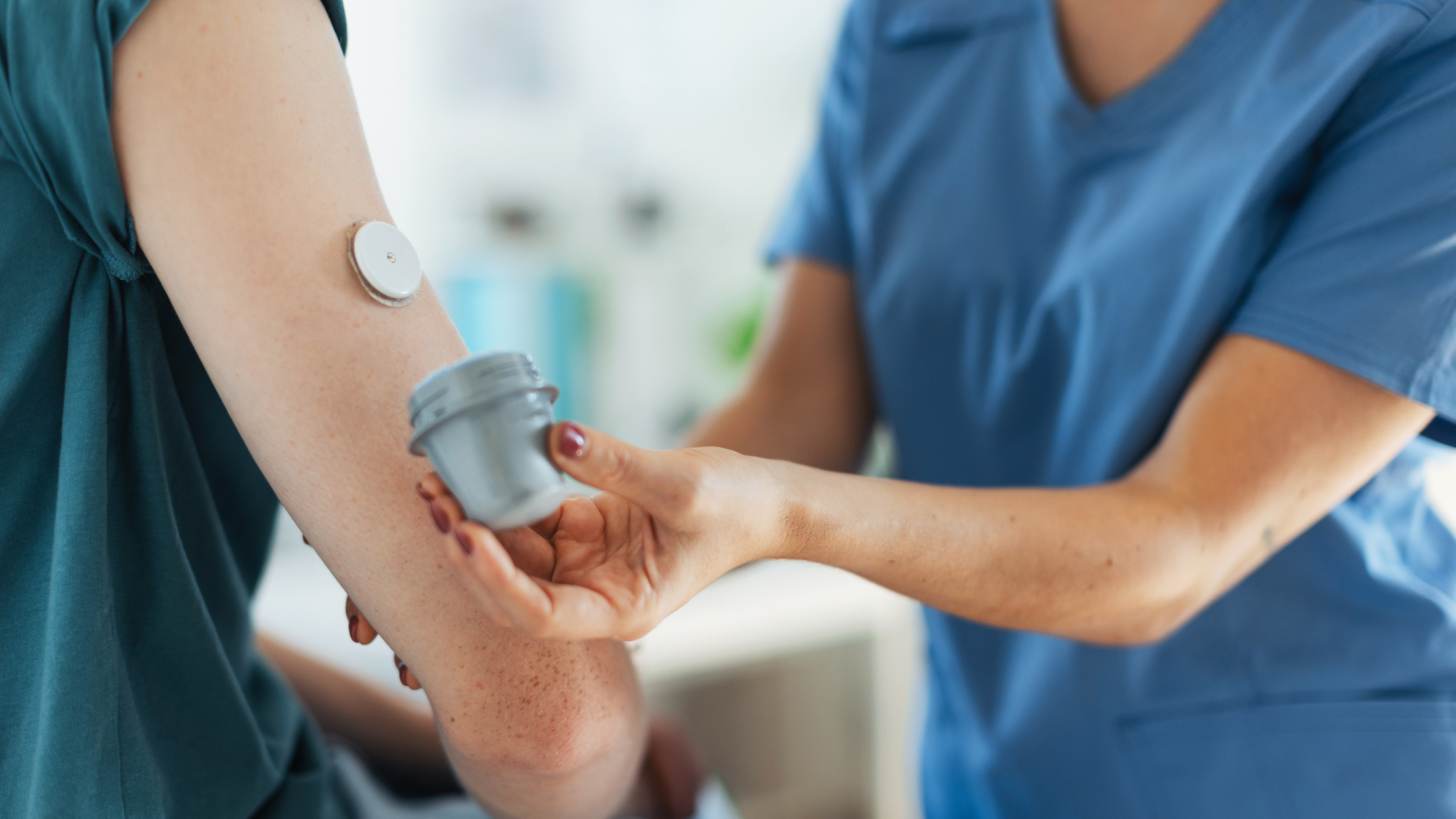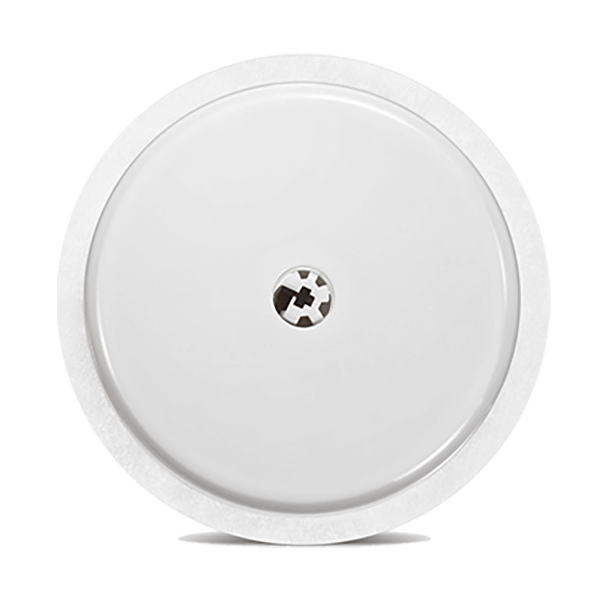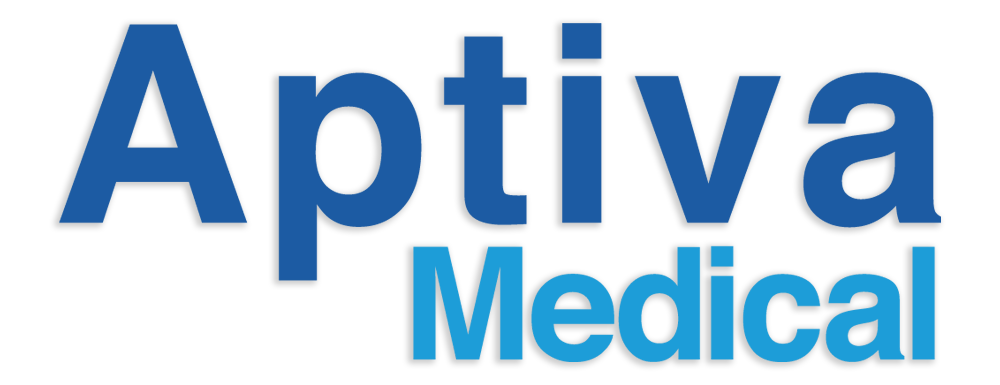Imagine a world where managing diabetes is no longer a daily struggle, but a streamlined process aided by innovative technology. Welcome to the world of Continuous Glucose Monitoring (CGM), a game-changer in diabetes care that significantly improves blood sugar control and enhances the quality of life for people with diabetes.
Key Takeaways
- CGM revolutionizes diabetes care by providing real-time data and empowering individuals to make timely decisions.
- CGM offers numerous advantages for Type 2 diabetes management, leading to improved blood sugar control with real-time feedback & alerts.
- Aptiva Medical provides reliable brands of CGM devices at an affordable cost.
Understanding Continuous Glucose Monitoring (CGM)

Continuous Glucose Monitoring, often referred to as CGM, is a wearable technology that consistently monitors blood glucose levels throughout the day and night. With a diverse range of models like real-time, intermittent-scan, or data collecting types, continuous glucose monitors offer a helping hand in making smarter dietary choices, planning physical activity, and managing medication doses, all while showcasing how continuous glucose monitor work is essential for maintaining optimal glucose levels.
How CGM works
CGM operates through a tiny sensor, discreetly inserted under the skin, that measures glucose levels every few minutes. The sensor’s data is wirelessly transmitted to a display device, providing real-time glucose readings.
This constant monitoring of glucose levels allows individuals to effectively manage diabetes mellitus by making prompt decisions about diet, physical activity, and medication use, thus managing diabetes successfully.
To elaborate, the sensor, which is about the size of a coin, is typically placed in areas of the body where it can easily measure glucose levels, such as the abdomen or upper arm. It is designed to be comfortable and unobtrusive, allowing users to carry on with their daily activities without any inconvenience.
The data collected by the sensor is then sent to a display device, which could be a dedicated receiver or even a compatible smartphone. The display device shows the user’s current glucose level, and some models can also show a graph of past glucose levels, making it easier for the user to spot trends and patterns.
This technology is a game-changer in diabetes management. It provides individuals with real-time information about their glucose levels, enabling them to make timely adjustments to their diet, physical activity, and medication use. This proactive approach to diabetes management can lead to better blood glucose control, reducing the risk of complications and improving the individual’s overall quality of life.
Components of a CGM system

A CGM system is composed of:
- A sensor, inserted under the skin, that measures glucose levels in the interstitial fluid
- A transmitter that wirelessly transmits the glucose data
- A display device, such as a smartphone or a dedicated receiver, that provides real-time monitoring of glucose levels.
The constant monitoring of glucose levels aids in preventing complications often linked with uncontrolled diabetes.
The role of CGM in diabetes care
Continuous Glucose Monitoring (CGM) is instrumental in diabetes care. It provides continuous glucose readings, which are crucial in effectively managing blood sugar levels and adjusting insulin dosing. This constant flow of information empowers individuals with diabetes to make informed decisions about their dietary choices, exercise plans, and lifestyle modifications, and insulin dose adjustments. These decisions, based on real-time data, help individuals to better manage their condition, leading to improved overall health. The role of CGM in diabetes care is multifaceted, but its primary function is to provide a comprehensive, real-time understanding of an individual’s glucose levels, enabling them to take control of their diabetes management, including insulin dosing, and improve their health outcomes.
Also, utilizing CGM can aid in preventing chronic diabetes complications, including digestive and kidney diseases.
Advantages of CGM in Type 2 Diabetes Management

CGM introduces significant benefits to the management of Type 2 diabetes. It provides real-time glucose readings, allows for trend analysis, and alerts when glucose levels are too high or too low. Moreover, CGM significantly reduces the need for frequent fingerstick testing, making it more convenient and comfortable.
It also allows for effortless sharing of glucose data with healthcare professionals or caregivers, thus enhancing diabetes management as recommended by the American Diabetes Association.
Improved blood sugar control
CGM assists in attaining improved blood sugar control through constant glucose readings. It allows individuals to closely monitor their glucose levels and make timely adjustments to their diet, medication, or physical activity.
The real-time data from CGM devices allows individuals and their healthcare providers to determine how much insulin is needed, thus enhancing blood sugar control and overall diabetes management with the use of an insulin pump.
Real-time feedback and alerts
CGM devices provide the following benefits:
- Real-time glucose readings
- Alerts when glucose levels fall below or rise above target range
- Prompt action can be taken to correct blood glucose level
- Helps prevent potential complications such as hypoglycemia and hyperglycemia
- Ensures optimal diabetes management.
Trend analysis and pattern recognition
CGM devices offer the following benefits:
- They track glucose trends over time, providing valuable insights into how glucose levels change throughout the day in response to various factors such as meals, exercise, and stress.
- They allow individuals with diabetes to analyze glucose trends and recognize patterns, which is a powerful tool in diabetes management.
- They empower individuals with diabetes to make informed decisions about their diet, exercise routine, and insulin dosing, leading to optimized glucose control.
Aptiva Medical’s CGM Device Offerings

At Aptiva Medical, we understand that every patient’s needs and preferences are unique. That’s why we offer a range of CGM devices, including those from leading brands like Dexcom and Freestyle. Our experienced and dedicated team is always ready to guide patients in selecting the right device that best suits their lifestyle, health goals, and budget. We provide comprehensive information about each device’s unique features, ease of use, and compatibility, helping patients make an informed decision for effective diabetes management.
Integrating CGM with Lifestyle and Treatment Plans

Integrating CGM data into daily life and treatment plans can greatly improve diabetes management. It provides insights into how food, exercise, and medication influence blood sugar levels, thereby empowering individuals to make informed decisions about their lifestyle and treatment.
Adjusting insulin doses based on CGM data
CGM data plays a crucial role in adjusting insulin doses. By providing real-time glucose data, CGM allows for more accurate and timely adjustments to insulin doses. This ensures optimal blood sugar control and significantly reduces the risk of hypoglycemia or hyperglycemia.
Making informed dietary choices
By providing real-time information on how different foods affect blood sugar levels, CGM data can guide informed dietary choices. This helps individuals with diabetes better manage their blood sugar levels, thereby improving their overall health.
Developing an effective exercise plan
CGM data can guide the development of an effective exercise plan. By monitoring glucose levels before, during, and after workouts, CGM data can inform adjustments to exercise intensity and duration for optimal results.
Such tailored exercise planning can notably enhance blood sugar control and overall diabetes management.
Overcoming Common CGM Challenges

While CGM devices offer numerous benefits, they also come with certain challenges. However, with the right guidance and support, these challenges can be efficiently managed, ensuring the best use of CGM for diabetes management.
Skin irritation and sensor placement
Skin irritation and sensor placement are common issues associated with CGM use. However, these can be minimized by following the manufacturer’s guidelines and using skin barriers or overlay tapes.
Frequently changing the sensor placement site can also help in preventing skin irritation.
Calibrating the CGM device
Frequent calibration of the CGM device, following the manufacturer’s instructions, is necessary to maintain accurate glucose readings. This ensures the reliability of the device and helps patients stay informed about their blood sugar levels.
Managing costs and insurance coverage
The cost of CGM devices and supplies can be a concern for many patients. However, Aptiva Medical is committed to helping patients navigate insurance coverage and manage these costs, offering affordable start-up kits and replaceable sensors.
Innovations in CGM Technology
The future of diabetes technology, particularly CGM advancements, presents promising developments such as artificial pancreas systems and enhanced sensor accuracy. These advancements will further revolutionize diabetes care, enabling individuals to manage their diabetes more effectively and improve their quality of life.
Artificial pancreas systems, also known as closed-loop systems, are a significant breakthrough. These systems combine CGM with an insulin pump to automatically adjust insulin delivery based on real-time glucose readings. This technology essentially mimics a healthy pancreas’s functioning, leading to more precise blood sugar control and reducing the burden of decision-making for individuals with diabetes.
Enhanced sensor accuracy is another area of development in CGM technology. More accurate sensors mean more reliable glucose readings, which is crucial for effective diabetes management. With improved accuracy, individuals can make more informed decisions about their diet, exercise, and insulin dosing, reducing the risk of hypoglycemia and hyperglycemia.
In addition to these, the integration of CGM data with digital health apps is also on the horizon. These apps can analyze CGM data and provide personalized recommendations, further empowering individuals to manage their diabetes effectively.
These exciting developments in CGM technology are not just about improving diabetes management; they’re about transforming it. They’re about giving individuals with diabetes the tools they need to take control of their condition and live healthier, happier lives.
In a nutshell, CGM technology has revolutionized diabetes care, offering real-time glucose monitoring and enabling informed decisions about diet, exercise, and insulin dosing. With Aptiva Medical’s range of CGM devices and commitment to cost management, individuals with diabetes can benefit from this innovative technology and enhance their diabetes management.
















